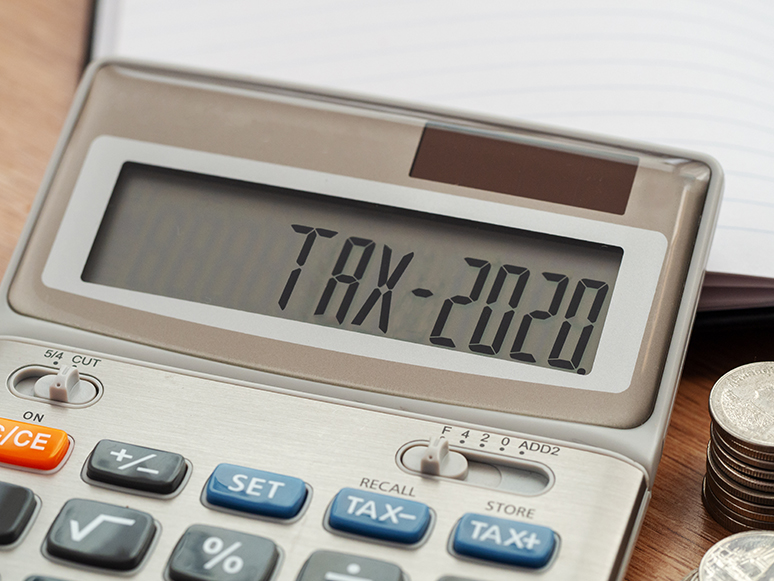logo


25th Feb, 2024

With the government finally caving into pressure to change the stage 3 income tax cuts despite its previous promises to keep the already legislated measures, new proposed tax rates have been flagged to come into place from 1 July 2024, largely – in comparison to the legislated measures – benefiting those earning less than $45,000.
The talk about the stage 3 income tax cuts has reached fever pitch in recent weeks. The changes were originally legislated by the previous Coalition government in 2019 with support of the then Labor opposition. During the 2022 election campaign and since coming into government, Prime Minister Anthony Albanese had reassured voters on multiple occasions that the stage 3 tax cuts would remain. However, with the recent inflationary stressors, the government has been under increasing pressure to scrap the already legislated tax cuts in favour of cost-of-living relief for low to middle income earners, which would require the introduction of amending legislation.
As a refresher, the original stage 3 tax cuts are due to come in place from 1 July 2024, and would benefit individuals that earn above $45,000 of taxable income.
From 1 July 2024 under the already legislated stage 3 tax measures, those earning taxable income between $45,000 and $200,000 will be taxed at $5,092 plus 30% of excess over $45,000. In addition, individuals who earn $200,001 and more will taxed at $51,592 plus 45% of excess over $200,000.
According to the latest ABS data, the median earnings of full-time Australian workers are around $1,600 per week, equating to $83,200 per year. Under the current rates a worker on this median wage would be paying $17,507 in tax, and under the already legislated stage 3 rates for the 2024–2025 income year the same worker would be paying $16,552 (a tax saving of $955).
Of course, as critics of the legislated tax cuts have pointed out, those who earn more will be saving more. For example, the same ABS data indicates that individuals earning $2,820 per week are in the 90th percentile of workers in Australia. This figure equates to annual earnings of $146,640. Under the current tax rates a worker on this wage would be paying around $39,323 in tax, and under the already legislated stage 3 tax rates the same worker would only be paying $35,584 (a tax saving of around $3,739).
This effect becomes even more pronounced at the edge of the stage 3 threshold of $200,000. As currently legislated these individuals would experience a tax saving of a whopping $9,075 ($60,667 in tax under the current rates versus $51,592 in 2024–2025 under the stage 3 tax cuts).
Under the government’s most recent proposed changes, those earning between $18,201 and $45,000 would see their tax rate reduced from 19% to 16%. In addition, those who earn between $45,001 and $135,000 would be taxed at the new marginal tax rate of 30%, and the existing 37% marginal rate would be retained but would apply to individuals earning between $135,001 and $190,000. The top marginal rate of 45% would remain for those who earn $190,001 and above.
An average worker earning $83,200 per year will be better off under the government’s proposed changes, paying around $15,748 in tax (versus $16,552 under stage 3 and $17,507 under the current rates), and those in the 90th percentile of earners would be slightly worse off under the proposed changes ($35,594 in tax) compared to stage 3 ($35,584 in tax), but would still be better off than under the current system ($39,323 in tax).
The government will now be working to get the proposed changes passed before 1 July 2024 (when the original stage 3 changes were due to apply).
09th Feb, 2021

Tax planning or tax avoidance – do you know the difference? Tax planning is a legitimate and legal way of arranging your financial affairs to keep your tax to a minimum, provided you make the arrangements within the intent of the law. Any tax minimisation schemes that are outside the spirit of the law are referred to as tax avoidance, and could attract the ATO’s attention.
The ATO has outlined some common features of tax avoidance schemes, and we can help you to steer clear of them. While it’s not always easy to identify these schemes, the old adage of “if it seems too good to be true, it probably is” is a good rule of thumb.
Tax avoidance schemes range from mass-marketed arrangements advertised to the public, to individualised arrangements offered directly to experienced investors. Other schemes exploit the social/environmental conscience of people or their generosity. As different as these schemes are, the common threads involve promises of reducing taxable income, increasing deductions, increasing rebates or entire avoidance of tax and other obligations.
Schemes may include complex transactions or distort the way funds are used in order to avoid tax or other obligations. They may also incorrectly classify revenue as capital, exploit concessional tax rates, or inappropriately move funds through several entities including trusts to avoid or minimise payable tax.
Currently, the ATO has its eyes on retirement planning schemes, private company profit extraction and certain problematic financial products.
17th Nov, 2020

Several tax announcements from the 2020 Federal Budget have now been passed into law.
These include bringing forward changes to the personal income tax thresholds so that they apply from 1 July 2020. From that date, the top threshold of the 19% personal income tax bracket is increased from $37,000 to $45,000. The top threshold of the 32.5% tax bracket is increased from $90,000 to $120,000. The low income tax offset increases to $700 and the low and middle income tax offset (up to $1,080) is retained for 2020–2021.
A range of tax concessions already available to small businesses have been extended to medium sized businesses as well, and businesses with turnover less than $5 billion can deduct the full cost of eligible depreciating assets that are installed ready for use between 6 October 2020 and 30 June 2022.
The ATO has issued updated tax withholding schedules to reflect the 2020–2021 income year personal tax cuts. Employers must now make sure they are withholding the correct amounts for pay runs processed in their systems from no later than 16 November onwards.
With these changes coming partway through the income year, employees and other payees will receive their entitlement to the reduced tax payable for the entire 2020–2021 year when they lodge their income tax returns for that period.
11th Apr, 2020

The ATO has advised that it has extended and expanded its pilot program which offers an independent review service to eligible small businesses disputing income tax related audits. The pilot will continue until 31 December 2020.
The independent review is conducted by an officer from the ATO’s Review and Dispute Resolution business line. This officer will not have been involved in the audit and will bring an independent “fresh set of eyes” to the review. The independent reviewer will consider the documents setting out the taxpayer’s position and the ATO audit position. They will schedule a case conference with the taxpayer and the ATO audit officer generally within one month of receiving the taxpayer’s review request. The case conference is an opportunity for all parties to assist the independent reviewer with understanding the facts and contentions.
The audit case officer will contact a taxpayer if it is eligible for an independent review. A written offer of independent review will also be included in the audit finalisation letter.